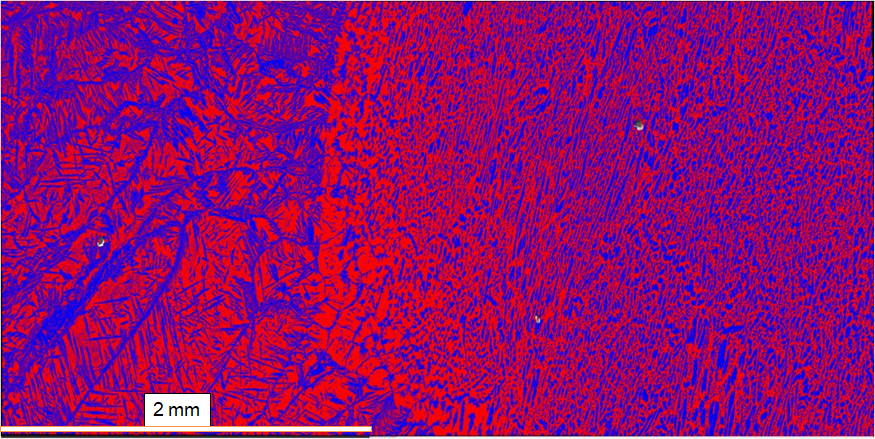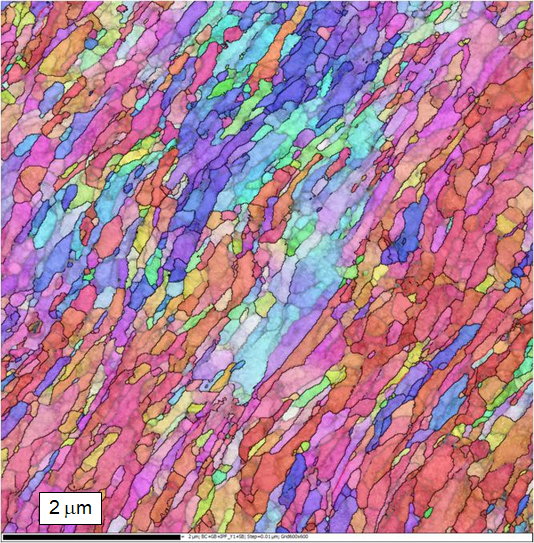产品
FIB-SEM
Nanomanipulators
OmniProbeOmniProbe Cryo软件
AZtec3DAZtecFeatureAZtec LayerProbeTEM
Hardware
EDSUltim MaxXploreImaging
软件
AZtecTEM
31st July 2019 | Author: Jenny Goulden
The Symmetry EBSD detector includes many innovations. It was the first CMOS EBSD detector, the first commercial EBSD detector to incorporate fibre optic coupling, offering fantastic sensitivity, and the first to achieve real time indexing speeds in excess of 3000pps, solving real customer problems.
When we designed Symmetry and we first discussed a mechanism where the detector could tilt under vacuum to change the screen position, we considered at length whether this was really a useful feature or just a marketing gimmick. To understand the benefit we persevered with the concept and mapped out a range of different workflows applicable to different samples. Our applications specialists reviewed the different application types which might benefit from the capability to actively tilt an EBSD detector.
At one end of the typical length scales applied in the SEM we considered large samples. These were typically on the cm scale, composed of larger grains and required automated large area mapping to acquire statistically meaningful data, as in Figure 1. The converse was a heavily deformed alloy which required analysis on the submicron scale. To achieve the highest spatial resolution an electron transparent TKD sample was used, Figure 2.

Figure 1 a montage of 96 individual maps over a steel weld. The map shows the microstructure and distribution of FCC (blue) and BCC (red) phases over the weld. This sample is approximately 5mm across and these data were collected at a working distance of 15mm

Figure 2 A highly deformed nanocrystalline Al-Mg-Cu alloy analysed using transmission Kikuchi diffraction, highlighting the complex nanostructure. Data were collected at a working distance of 4mm
To optimise conditions of analysis a longer working distance was needed for the large area mapping, and a shorter working distance for TKD. In both cases, EBSD results could be improved by moving the detector to optimise the position of the pattern centre, thus delivering the best results. It was undoubtedly clear that for this feature to be applied in day to day applications it needed to be easy to use.
Changing the height of the detector wasn’t difficult. We have always had SEM interfaces where it was possible to manually slide the EBSD detector up and down. However, this manual operation required breaking the vacuum, moving the detector, pumping the system and then recalibrating the EBSD detector before any further analysis could be done. Of course, as this was both time consuming and required considerable expertise, it was not a routine solution.
We understood that we required an implementation that all customers could use, i.e. a process controlled through the software user interface that automatically corrected for any change in detector geometry.
The only real solution involved integrating the control of the detector screen height into the AZtec software. This way AZtec is able to correct for the change in geometry through the automated calibration routine. In addition, linking the detector movement to the software has enabled the change in pattern centre position to be actively monitored in the software interface as the detector screen elevation changes. This makes it easy to optimise the position of the screen with respect to the sample. Finally, by recording and monitoring screen height through the software, these same optimum conditions can be easily reused.
The video below demonstrates how tilting the Symmetry detector is fully controlled through the AZtec software making it easy to achieve, with reliable results. The result is that this is a very useful tool and far more than a gimmick.
We’re always dedicated to helping our customers find solutions to their problems, and Symmetry is our answer. To learn more about the potential of EBSD to better your research, book a demo now.
Book a DemoWe send out monthly newsletters keeping you up to date with our latest developments such as webinars, new application notes and product updates.
 公安机关备案号31010402003473
公安机关备案号31010402003473